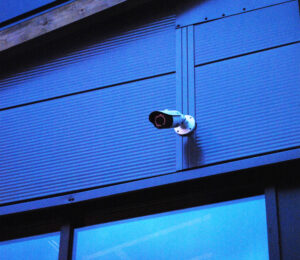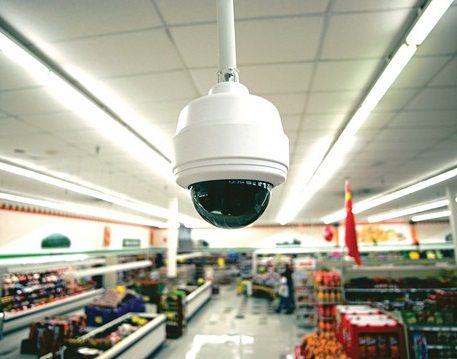Camera surveillance. An effective and necessary way to protect people or an invasion of privacy? It’s probably fair to say the majority of people feel the truth lies somewhere in the middle; it’s a very effective tool that helps with crime reduction – but it must be used responsibly. And defining exactly what ‘responsible’ looks like is one of the drivers behind the draft national surveillance camera strategy that’s currently out for consultation.
The consultation, which runs until the 6th December, will shape the national strategy for England and Wales. So if you’ve any specific views on the subject, you might want to take the opportunity to put your opinions forward. The Surveillance Camera Commissioner is keen for anyone who’s got a view to get involved and you don’t have to be directly connected to the industry; after all, this is an issue that affects everyone.
Why’s this strategy been drafted in the first place? While many people automatically think of CCTV cameras when they hear the phrase surveillance camera, the reality is the term covers a lot more than that. There’s body-worn video, automatic number plate recognition (ANPR) and unmanned aerial vehicles (drones). And without a doubt, surveillance cameras have a hugely important role to play. They are there to make people feel safe and more importantly, actually make them safe. They can help deter crime and anti-social behaviour, protecting people and property as a result. They can be used as part of an access control system. They can keep traffic moving at a safe speed.
But the public and other groups (like employees) need to be confident that cameras are being deployed and used responsibly. Despite regulation in this area, there are still concerns over the potential for unjustified invasions of privacy or other kinds of misuse. So this strategy has a really important role to play in reassuring people that if surveillance cameras are used in public places, they’re there for a legitimate reason.
Raise standards: increase compliance
In fact, this strategy has several aims. It’ll be used to provide direction and leadership to surveillance camera makers, installers and users. It’ll clarify best practice and further explain how to comply with legal obligations like the Data Protection Act and the Private Security Industry Act. The strategy’s also being drafted with the intention of helping both surveillance camera firms and users demonstrate compliance with the principles of the surveillance camera code of practice and all other relevant guidance.
It’s also trying to address the challenges that result from the pace of technological change. Think back, for example, to the grainy images from the CCTV cameras of not that long ago compared to the ones used today. Technology’s moving on rapidly. That brings with it many improvements but it’s essential that people don’t feel their privacy is being compromised because of it.
How will this strategy help?
The strategy’s been divided into ten key work strands. Objectives have been developed for each strand and delivery plans will be used to identify the specific actions that’ll need to be carried out to meet those objectives. Ultimately, it’ll provide a framework that’ll help you decide whether surveillance is appropriate and how to do it effectively without excessive interference with privacy.
Surveillance camera systems are used in many businesses so you could well have an interest in the direction this strategy goes in. So use the opportunity to make your opinions known; you can respond to the consultation via the Surveillance Camera Commissioner’s area of the GOV.UK website. A response to this consultation exercise is due to be published by April 2017.
While many people automatically think of CCTV cameras when they hear the phrase surveillance camera, the reality is the term covers a lot more than that. There’s body-worn video, automatic number plate recognition (ANPR) and unmanned aerial vehicles (drones). And without a doubt, surveillance cameras have a hugely important role to play. They are there to make people feel safe and more importantly, actually make them safe. They can help deter crime and anti-social behaviour, protecting people and property as a result. They can be used as part of an access control system. They can keep traffic moving at a safe speed.
But the public and other groups (like employees) need to be confident that cameras are being deployed and used responsibly. Despite regulation in this area, there are still concerns over the potential for unjustified invasions of privacy or other kinds of misuse. So this strategy has a really important role to play in reassuring people that if surveillance cameras are used in public places, they’re there for a legitimate reason.
Raise standards: increase compliance
In fact, this strategy has several aims. It’ll be used to provide direction and leadership to surveillance camera makers, installers and users. It’ll clarify best practice and further explain how to comply with legal obligations like the Data Protection Act and the Private Security Industry Act. The strategy’s also being drafted with the intention of helping both surveillance camera firms and users demonstrate compliance with the principles of the surveillance camera code of practice and all other relevant guidance.
It’s also trying to address the challenges that result from the pace of technological change. Think back, for example, to the grainy images from the CCTV cameras of not that long ago compared to the ones used today. Technology’s moving on rapidly. That brings with it many improvements but it’s essential that people don’t feel their privacy is being compromised because of it.
How will this strategy help?
The strategy’s been divided into ten key work strands. Objectives have been developed for each strand and delivery plans will be used to identify the specific actions that’ll need to be carried out to meet those objectives. Ultimately, it’ll provide a framework that’ll help you decide whether surveillance is appropriate and how to do it effectively without excessive interference with privacy.
Surveillance camera systems are used in many businesses so you could well have an interest in the direction this strategy goes in. So use the opportunity to make your opinions known; you can respond to the consultation via the Surveillance Camera Commissioner’s area of the GOV.UK website. A response to this consultation exercise is due to be published by April 2017.
 While many people automatically think of CCTV cameras when they hear the phrase surveillance camera, the reality is the term covers a lot more than that. There’s body-worn video, automatic number plate recognition (ANPR) and unmanned aerial vehicles (drones). And without a doubt, surveillance cameras have a hugely important role to play. They are there to make people feel safe and more importantly, actually make them safe. They can help deter crime and anti-social behaviour, protecting people and property as a result. They can be used as part of an access control system. They can keep traffic moving at a safe speed.
But the public and other groups (like employees) need to be confident that cameras are being deployed and used responsibly. Despite regulation in this area, there are still concerns over the potential for unjustified invasions of privacy or other kinds of misuse. So this strategy has a really important role to play in reassuring people that if surveillance cameras are used in public places, they’re there for a legitimate reason.
Raise standards: increase compliance
In fact, this strategy has several aims. It’ll be used to provide direction and leadership to surveillance camera makers, installers and users. It’ll clarify best practice and further explain how to comply with legal obligations like the Data Protection Act and the Private Security Industry Act. The strategy’s also being drafted with the intention of helping both surveillance camera firms and users demonstrate compliance with the principles of the surveillance camera code of practice and all other relevant guidance.
It’s also trying to address the challenges that result from the pace of technological change. Think back, for example, to the grainy images from the CCTV cameras of not that long ago compared to the ones used today. Technology’s moving on rapidly. That brings with it many improvements but it’s essential that people don’t feel their privacy is being compromised because of it.
How will this strategy help?
The strategy’s been divided into ten key work strands. Objectives have been developed for each strand and delivery plans will be used to identify the specific actions that’ll need to be carried out to meet those objectives. Ultimately, it’ll provide a framework that’ll help you decide whether surveillance is appropriate and how to do it effectively without excessive interference with privacy.
Surveillance camera systems are used in many businesses so you could well have an interest in the direction this strategy goes in. So use the opportunity to make your opinions known; you can respond to the consultation via the Surveillance Camera Commissioner’s area of the GOV.UK website. A response to this consultation exercise is due to be published by April 2017.
While many people automatically think of CCTV cameras when they hear the phrase surveillance camera, the reality is the term covers a lot more than that. There’s body-worn video, automatic number plate recognition (ANPR) and unmanned aerial vehicles (drones). And without a doubt, surveillance cameras have a hugely important role to play. They are there to make people feel safe and more importantly, actually make them safe. They can help deter crime and anti-social behaviour, protecting people and property as a result. They can be used as part of an access control system. They can keep traffic moving at a safe speed.
But the public and other groups (like employees) need to be confident that cameras are being deployed and used responsibly. Despite regulation in this area, there are still concerns over the potential for unjustified invasions of privacy or other kinds of misuse. So this strategy has a really important role to play in reassuring people that if surveillance cameras are used in public places, they’re there for a legitimate reason.
Raise standards: increase compliance
In fact, this strategy has several aims. It’ll be used to provide direction and leadership to surveillance camera makers, installers and users. It’ll clarify best practice and further explain how to comply with legal obligations like the Data Protection Act and the Private Security Industry Act. The strategy’s also being drafted with the intention of helping both surveillance camera firms and users demonstrate compliance with the principles of the surveillance camera code of practice and all other relevant guidance.
It’s also trying to address the challenges that result from the pace of technological change. Think back, for example, to the grainy images from the CCTV cameras of not that long ago compared to the ones used today. Technology’s moving on rapidly. That brings with it many improvements but it’s essential that people don’t feel their privacy is being compromised because of it.
How will this strategy help?
The strategy’s been divided into ten key work strands. Objectives have been developed for each strand and delivery plans will be used to identify the specific actions that’ll need to be carried out to meet those objectives. Ultimately, it’ll provide a framework that’ll help you decide whether surveillance is appropriate and how to do it effectively without excessive interference with privacy.
Surveillance camera systems are used in many businesses so you could well have an interest in the direction this strategy goes in. So use the opportunity to make your opinions known; you can respond to the consultation via the Surveillance Camera Commissioner’s area of the GOV.UK website. A response to this consultation exercise is due to be published by April 2017. 